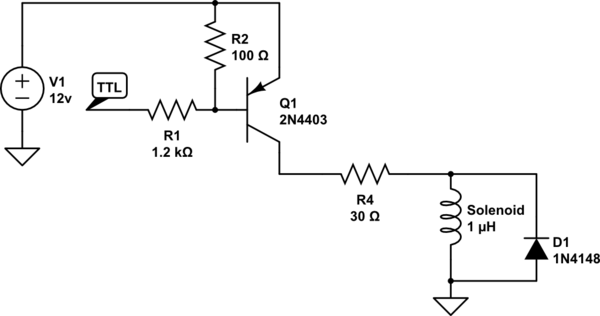I'm trying to drive this solenoid with an inverse logic output (from a 74154).
Here's what I have in mind at the moment.

simulate this circuit – Schematic created using CircuitLab
R3 is actually the solenoid in question.
The application is an automated bell striker, so the duty cycle here is going to be very brief. Even in the most... energetic cases, I'd expect that the coil would be energized only long enough to strike the bell (I'm estimating maybe somewhere in the 50 ms range) and then it would rest for at least 500 ms, and more likely for seconds at a time.
I've simulated this, and it seems like it would work unless I am missing something stunningly obvious. With a 12 volt supply, the collector current should be around 350 mA, and the whole circuit 4.8 watts, which would give the solenoid 30 gf, if I'm reading the data sheet correctly.
Is this a stunningly terrible idea? Any other suggestions for improving it?

